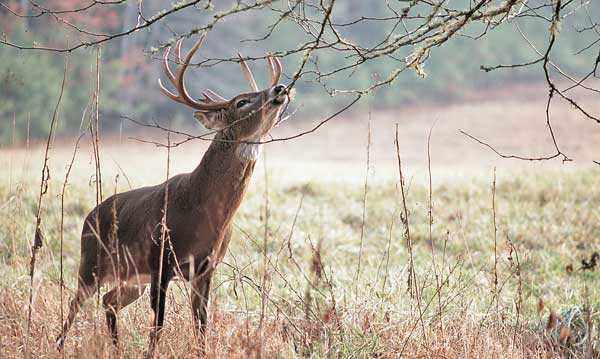
Little rifles are plenty big enough to take trophy bucks.
Hunters who shoot accurately can take deer — yes, even big bucks — with small-caliber rifles. I always get in trouble when I make this statement, and even though I know there’s a different point of view than mine, I still believe it. I realize that many outdoorsmen like to talk about ballistics, bullet size, speed and all that gun talk. However, if you can’t shoot accurately, the size of the bullet and how fast it’s traveling will play a very-small role in whether or not you harvest a buck.
Of course, the larger the caliber and the bigger the bullet you shoot, the more shock and knockdown power you have. However, if you can shoot accurately and break a buck’s neck or deliver a heart shot, you’ll have success, regardless of the size of the bullet and the speed at which it’s traveling.
A game warden once told me, “The most-successful poacher I ever caught was taking deer shooting .22-Short ammunition. He wouldn’t shoot a deer unless he could shoot him dead-center in the ear. This guy was not only the most-successful poacher I knew. He also was the best rifle shot I’d ever seen.”
Lay the buck down
At the beginning of my hunting career, I shot a .30-06 for years. Then, I bought a brand-new 7mm that I wanted to sight-in before a hunt. My host, John Lanier, said, “John, we don’t have time to put on rings and bases and sight-in that rifle. You arrived so late in the day that the deer will be in the green field by the time you get there. Take my .243. It’s dead-on. But shoot it one time, so you’ll believe me. We’ll sight your rifle in tomorrow at lunchtime.”
I did as my host suggested. When Lanier took me to my stand that afternoon, he explained, “I’m gonna let you off about 100 yards from your green field. Sneak down the road, and if there already are bucks out on the green field, don’t go to the shooting house. Take a shot from the woods before you reach the green field.”
The instructions Lanier followed up with really surprised me and drastically changed the way I hunted. As a veterinarian, Lanier understood a deer’s anatomy. Plus, he’d hunted his whole life and came from a long line of hunters.
“Now, John, don’t aim at that deer’s shoulders. You aim for the center of the deer’s neck,” he said.
“Why do you want me to aim for the neck?” I asked.
A big grin came across his face, and he told me, “One of two things will happen if you aim for the neck — when you squeeze the trigger, the buck will be laying where he was standing, or you’ll miss him completely. Either way, I won’t have to go trailing that deer.”
When I said I didn’t understand why he considered a neck shot better than a shoulder shot, Lanier answered, “Even if you don’t hit the spinal column, the .243 has enough knockdown power to break the buck’s neck. If you break his neck, he’ll drop like a sack of potatoes.”
That afternoon, I saw the value of Lanier’s wisdom. When I arrived at the green field, I spotted a nice 8-point buck walking into the field. I kneeled beside a young pine tree and braced the .243. When the buck turned broadside, he raised his head to look at a doe coming into the grass. That’s when I centered the crosshairs on the middle of the buck’s neck and squeezed the trigger.
As Lanier predicted, the buck soon lay where he’d stood only a second before, and I fell in love with the .243.
Unless you’re hunting a powerline right-of-way or an extremely large pasture, most of the time you can get a shot at 150 yards or less. If you’ve done an effective job of scouting, you often will have shots at 50 yards or less. At that range, even with big deer, a 6mm or a .243 can efficiently put down whitetails.
Don’t leave your love
When my son, John Jr., first expressed an interest in deer hunting, I took him out on the range, put ear muffs over his ears and let him shoot a .243, because of its light recoil. John already had shot a BB gun, a .22 rifle and a .410. In terms of recoil, he had no trouble moving up to a .243. John really enjoyed shooting the .243, and became very accurate with it.
John is 33 years old now. Every deer he’s ever killed, he’s taken with that rifle, and he’s never seen the need to change. Although I shoot a wide variety of rifles and calibers, I still really enjoy shooting my .243. I know the gun; it shoots flat, and I enjoy great accuracy with it.
On my first trip to Canada some years ago, I took two guns in a double-gun case with me — my 7mm and my .243. When I opened my case at camp, my guide asked, “What’s that little pop gun?” pointing at my .243.
“A .243,” I explained.
He laughed and advised me, “We’ve got big deer here — not like those little deer you have in South Carolina, Georgia and Alabama. Leave that .243 here in your case, because you’ll need that 7mm. Nobody hunts with a little pop gun like that up here.”
The guide had thrown down the gauntlet. The age-old belief that you have to shoot a big rifle to kill a big deer once again had raised its ugly head.
“No,” I announced, “I’m going to hunt with my little pop gun.”
The guide frowned and said, “Okay. You can hunt with it. But you better pack a big lunch, because we’ll be out all day and will have to spend a lot of time trailing and tracking any deer you shoot, if you take that little pop gun.”
Around 11 o’clock the next morning, we moved through heavy snow to within 50 yards of a nice 8-point buck, looking away from us with his head down. I aimed low and a little back from the buck’s front shoulder, so the bullet would pass through his heart. When I squeezed the trigger, the buck kicked his hind legs high in the air and vanished into the snow and the thick evergreens.
“I told you that little pop gun wouldn’t kill a deer,” my guide, Pierre, told me. “Now, let’s go see how long it will take us to find him.”
Before we even reached the spot where the buck had stood, we could see a wide blood trail in the snow. When we walked less than 30 yards, we found the buck.
“Well, I guess that pop gun did pretty good,” Pierre observed, still not willing to give the .243 its due.
Small rifle tactics
Not until 2 p.m. on the second day of my Canadian hunt did we encounter another buck. We spotted it from about 300 yards away, across a power line and behind a blowdown tree, feeding on lichen, a kind of moss that grew on the sides of the trees.
We couldn’t see anything but his head and neck. After watching the buck for 10 to 15 minutes, Pierre told me, “There’s no way to get any closer. Let’s go find another buck.”
“Do you mind if I hunt that buck the way I’d hunt him back home?” I asked.
Pierre quickly answered, “He’s your buck. You can hunt him or not hunt him, but I don’t think we’ll take him.”
In the knee-deep snow, I thought I could use the small saplings scattered in front of us for cover as I tried to close the distance on the buck. I slung my .243 over my back, kneeled down, crawled on all fours and pushed snow with my nose so that only the top of my head and the tip of my rifle barely showed above the snow. I crawled within 175 yards of the buck. As I braced against the sapling, I heard Pierre say from behind me, “You won’t be able to shoot because all I can see is the deer’s neck and head. The rest of the buck is behind the bush.”
I whispered, “Do you mind if I take the shot?”
“No, you can take the shot, but I hope you’ve brought plenty to eat, so you can share it with me,” Pierre answered.
With my scope zeroed at 200 yards, I aimed just a hair below the center of the buck’s neck. When I squeezed the trigger, the buck vanished. “I told you you’d miss him,” Pierre observed.
“I don’t think so,” I replied.
We trudged across the open snow, but we didn’t see any blood, as we approached the tree. The deadfall blocked any view of the ground around the tree. However, when we walked to the spot where I’d seen the buck feeding, he lay where he’d been standing.
“Boy, I really hate this,” I told Pierre.
“What do you mean?” he said. “You made a fantastic shot.”
“Yeah,” I explained, “but when the buck fell, he skinned all the hide off his nose onto that tree where he’d been feeding.”
Accuracy with a rifle depends more on the hunter than the rifle. Once a hunter knows exactly how his rifle will shoot at specific distances with a specific bullet and powder charge, a hunter can shoot accurately, even with small calibers, if he can hold the rifle steady.
I’m not a small-caliber freak. Of course, there’s a place for large caliber rifles. I’ve taken a Coues buck at 378 yards with my Steyr-Mannlicher .30-06 in Arizona, and I’ve harvested several bucks with .270s, 7mms, 300 Weatherby mags and other rifles. However, in most of the South and a good portion of the East, in most instances, if a hunter does a thorough job of scouting, he can take a buck at 150 yards or less. At that range, you’ll find a .243 or a 6mm plenty of rifle to down even a monster-sized whitetail, if you place the bullet in the right place.

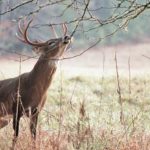
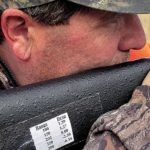
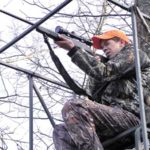
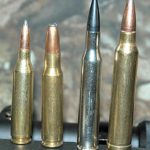
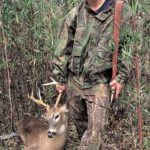
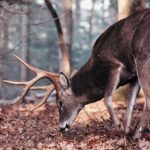


Be the first to comment